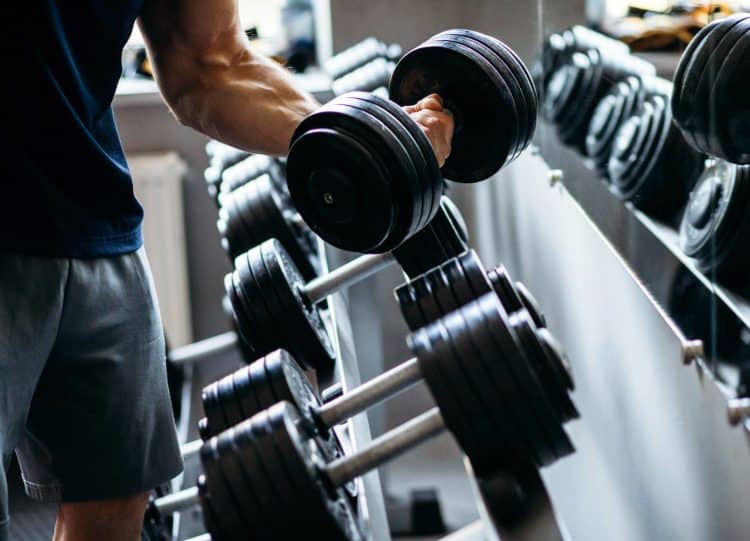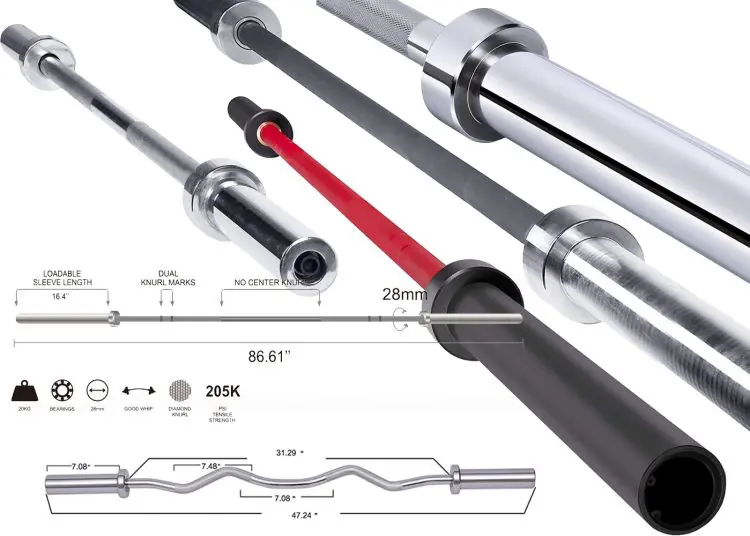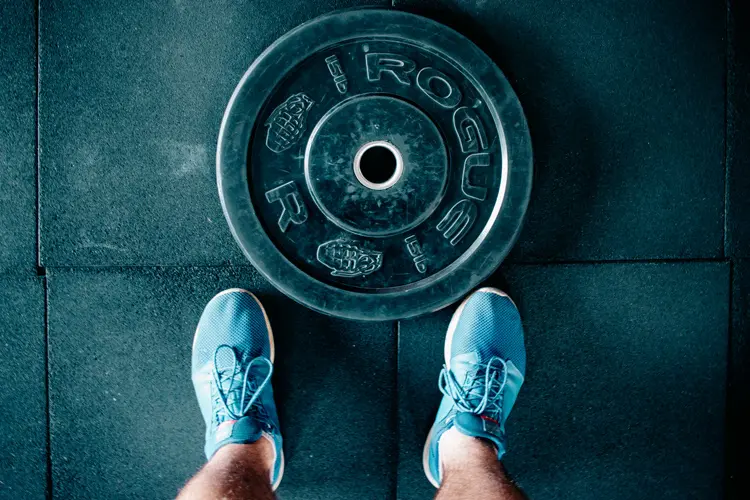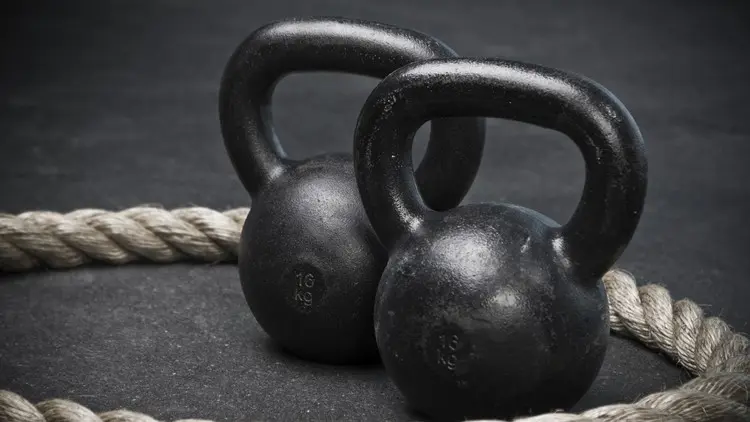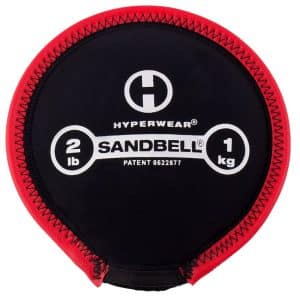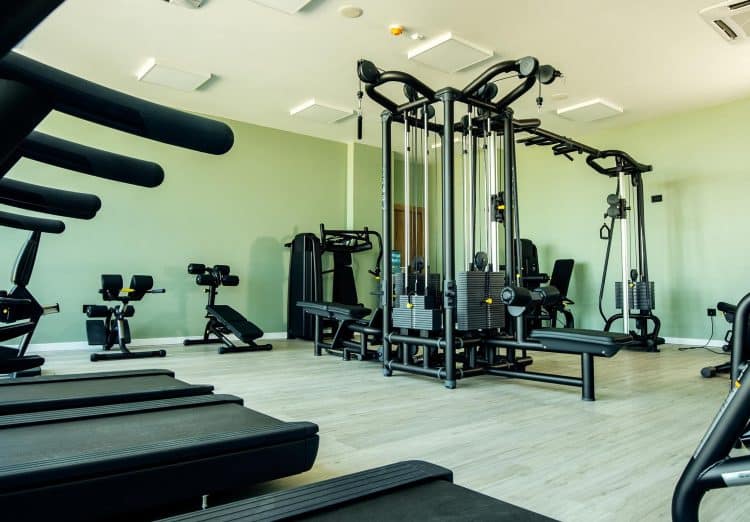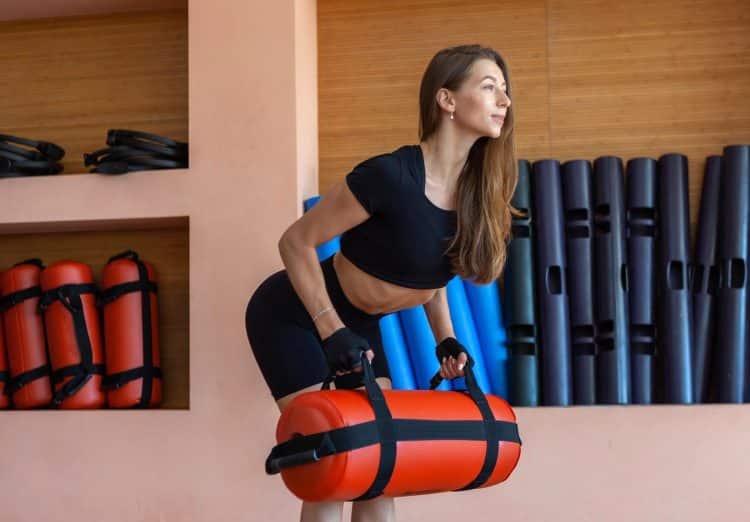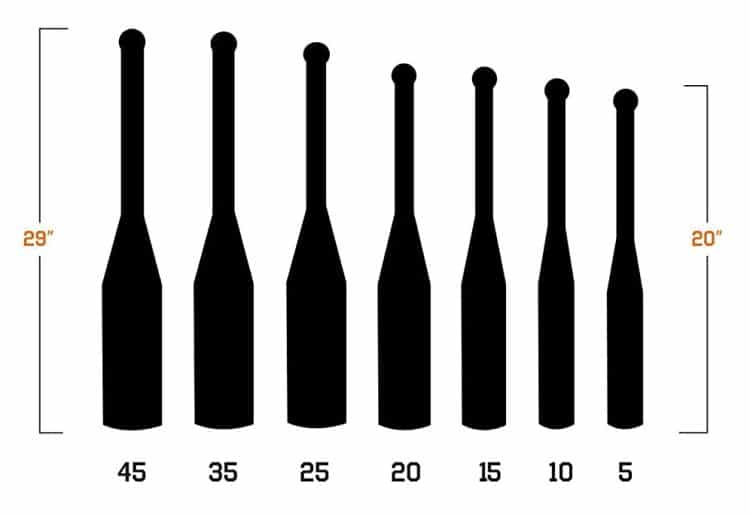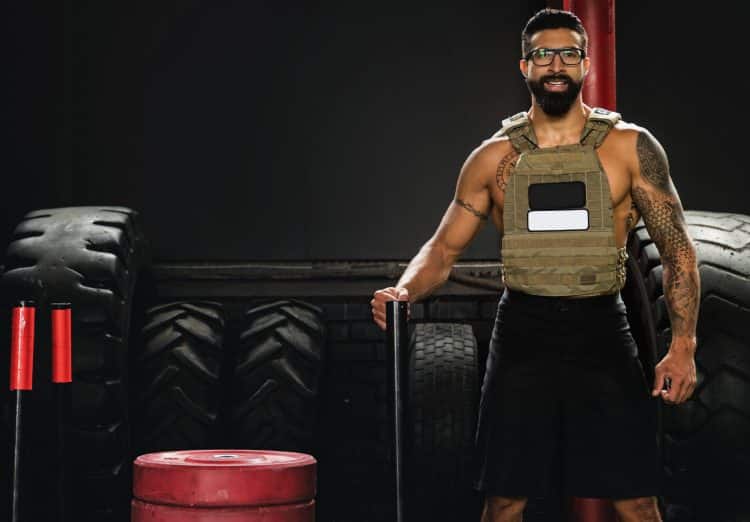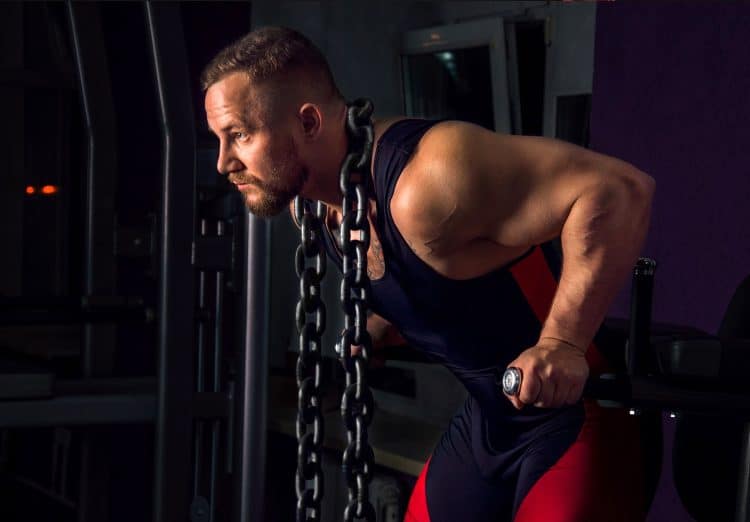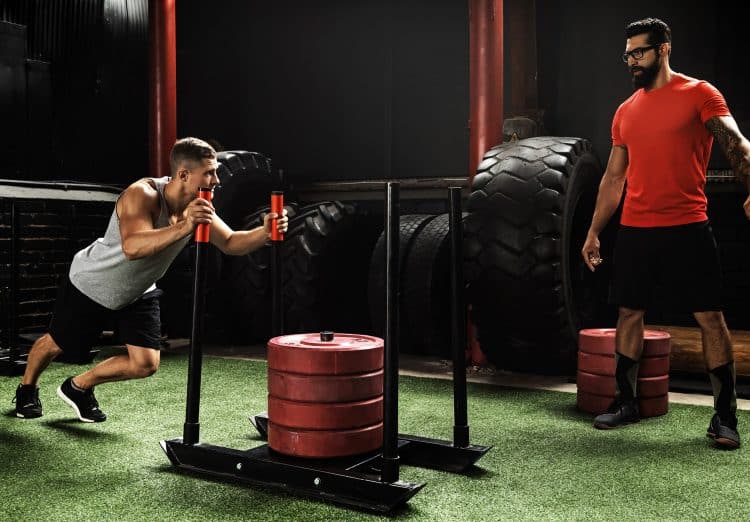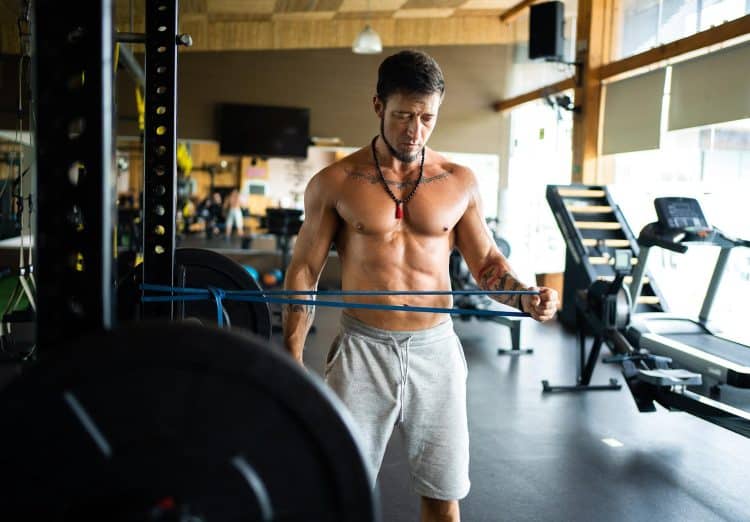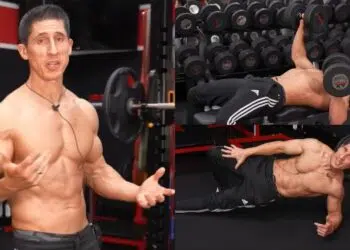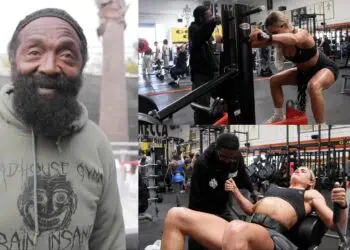Ask a person to visualize a resistance training routine, and they’ll probably imagine a jacked dude curling dumbbells or barbells. However, you’re in for a rude shock if you thought weight training was limited to dumbbells and barbells.
What is Weight Training?
Weight training, also known as strength training, resistance training, and muscular training, is a form of physical exercise done using your body weight or specialized equipment to build muscle mass, strength, and endurance.
Types of Weight Training
While building muscle mass, strength, and endurance are the end goals of a weight training program, several ways can lead to your objective. The main types of weight training include:
- Muscle Building: To achieve muscular hypertrophy, you should lift moderate-to-heavy weights in the 8-15 rep range.
- Building Strength: A person who wants to build strength should lift heavy, albeit safely, in the 1-5 rep range.
- Explosive Strength: This type of strength training is usually favored by athletes and focuses on lifting moderate to heavy weights in the 5-15 rep range. Explosive power-building exercises include hip thrusts, box jumps, kettlebell swings, and plyometric push-ups.
- Stamina and Endurance: To build muscular endurance, you should lift lighter weights for a higher number of reps (15+).
- Circuit Training: It is a full-body training regimen that usually focuses on building muscle, shredding fat, and improving conditioning. Lift light-to-moderate weights for a high number of reps (15-20+).
With the advancement in exercise science, we are witnessing a rise in the different types of weights used in the gym. Mind you — this article is just about different weight equipment you can use in the gym; we’re not even talking about the different types of compound or isolation exercise machines you can use.
Weight training has come a long way since the days of Arnold Schwarzenegger and the golden era. At the same time, the new equipment can be intimidating, especially for a newbie.
This article will take you through 16 different types of weights you can use in your resistance training routine.
Level Up Your Fitness: Join our 💪 strong community in Fitness Volt Newsletter. Get daily inspiration, expert-backed workouts, nutrition tips, the latest in strength sports, and the support you need to reach your goals. Subscribe for free!
What are the Major Health Benefits Associated with Weight Training?
But why should we care about different types of weight, you ask? Given below are the reasons why weight training should be an indispensable part of your exercise regimen:
1. Builds Strength and Muscle Mass
This is probably the most obvious benefit of strength training. Lifting weights can help you build muscle mass and strength. A 2018 study found that lifting free weights is more effective at building muscle mass and strength than machines while following a training program consisting of supersets. [1]
2. Improves Bone Density
Lifting weights can help build stronger bones, which reduces your risk of osteoporosis, fractures, and falls, especially as you age. A year-long study on postmenopausal women saw significant increases in bone density in their spine and hips. These areas are the most affected by osteoporosis in older women. [2]
3. Reduces Risk of Injury
Lifting weights can reinforce muscles, ligaments, and tendons around the major joints like knees, elbows, ankles, and hips, which can help lower your risk of injury. [3]
Plus, weight training can fix muscle imbalances, reducing the probability of pulling, tweaking, or tearing muscles while working out.
4. Enhance Your Game
Resistance training can improve your strength, agility, explosiveness, mobility, and flexibility, which can help an athlete take their game to the next level.
5. Sculpt Your Body
Many women resist weight training as they think it will make them look manly. However, girls do not produce the same amount of testosterone as their male counterparts to build the same amount of muscle mass. Lifting weights can help women sculpt and tone their bodies, turning them into Greek goddesses. [4]
6. Better Heart Health
Research suggests that engaging in weight training regularly can help decrease blood pressure, lower cholesterol levels, and improve blood circulation by strengthening the heart and blood vessels. [5]
7. Happy Hormones
A weight training session can be an incredibly effective mood booster. Exercise can bump up the production of your brain’s feel-good neurotransmitters, called endorphins. It can also reduce anxiety and improve your mental health. [6]
8. Prevents Joint and Back Pain
Lifting weights can help fix muscle imbalances, strengthen your tendons and ligaments, core and stabilizers, and improve your posture, which can help prevent joint and back pain.
9. Helps Loose Weight
Engaging in weight training can bump up your metabolic rate, improving your calorie-burning mechanism. It will help you burn calories even when you are not physically active. Plus, lifting weights has been shown to reduce abdominal and total body fat. [7]
10. Improves Balance and Stability
Since hitting weights strengthens your core and stabilizers, it can help lower your risk of falls. A 2019 study found that a balanced exercise program consisting of functional and resistance exercises reduced the rate of falls and the number of people experiencing falls in the elderly (people above the age of 65). [8][9]
16 Types of Weights You Can Find in the Gym
Here are the different types of weights every lifter should know about:
1. Dumbbell
Dumbbells are synonymous with weight training. Be it a five-star training facility or a bare-bone garage gym, most gyms have at least a pair of dumbbells.
Dumbbells come in different shapes and sizes. Most commercial gyms have sprawling rows of dumbbells. On the other hand, many home gym owners prefer adjustable dumbbells to save space and money.
Dumbbells can be used for several resistance training exercises to train different muscle groups.
Many dumbbells have steel plates on both ends, while others use a rubber cover for safety. Most gyms offer dumbbells between 2.5 pounds to 100 pounds.
Notably, strongman gyms usually have a big dumbbell called the strongman circus dumbbell with weight plate sleeves on both ends.
Trivia: The world’s heaviest dumbbell weighs 420 pounds and is owned by the popular YouTuber Furious Pete.
2. Barbell
Like dumbbells, barbells come in different shapes and sizes. While the full-size Olympic bars are used for compound lifts like the bench press, squat, deadlift, and clean and press, specialized bars like the EZ bar curl are commonly used for isolation exercises like the EZ bar curl and EZ bar skull crusher.
Different barbells have different amounts of knurling (gripping lines on the metal), whip (the way the weight changes as the bar moves), and sleeves (the ends of the barbell that hold the weight plates), and you should choose the one that best meets your needs.
Want to learn about the different types of barbells? Check out our detailed guide on the 18 barbells you should know about. It’s the only guide on barbells you’ll ever need, we promise.
3. Weight Plate
Weight plates, barbells, and dumbbells are arguably the most popular types of weights used in the gym. However, if you thought all weight plates are created equal, think again.
The common types of weight plates include standard-sized cast iron plates, rubber, crumb, technique, competition, urethane bumper plates, and rubber grip plates.
Besides using them on barbells and dumbbells, you could also use the weight plates as standalone training equipment in exercises like the weight plate front shoulder raise, weight plate side lateral raise, and rubber weight plate shrug.
Check Out: 8 Best Bumper Plates For Home Gym Weightlifting and CrossFit Reviewed
4. Kettlebell
Kettlebells are versatile pieces of training equipment. A kettlebell is a cast-iron or cast-steel ball with a handle attached at the top that is great for functional, cardiovascular, strength, and flexibility training.
Kettlebells can be used as a replacement for dumbbells in many exercises, which make them a great training tool for many lifters, especially the ones that train in their garage gym.
Unlike dumbbells, kettlebells come in interesting shapes. You can get a kettlebell that looks like a gorilla, ape, grenades, or the good ol’ cannonball.
5. Sandbell
So you had never heard of the sandbell before? You’re welcome!
While kettlebells are solid pieces of iron, the free-weight sandbells challenge your grip strength and put your core and stabilizers under more stress than solid weights, making the workout more challenging.
The sandbell is a versatile training tool that can work like the kettlebell, medicine ball, slam ball, and dumbbell to build lean muscle, work kettlebell grip, core strength, agility, grip strength, athleticism, and dynamic power.
Level Up Your Fitness: Join our 💪 strong community in Fitness Volt Newsletter. Get daily inspiration, expert-backed workouts, nutrition tips, the latest in strength sports, and the support you need to reach your goals. Subscribe for free!
6. Machines
What are machines doing on this list, you ask?
Resistance training machines are of two kinds — plate-loaded and selectorized. The plate-loaded machines use the weight plates (mentioned above), while the selectorized variants come with an in-built weight stack. Both machine types use weights, qualifying them for the different types of weights list.
The selectorized and plate-loaded machines both have the same effect on your muscles. However, advanced lifters prefer the plate-loaded variant as it allows them to stack on more weights than the selectorized machine with pre-loaded weights.
7. Sandbag
If you’ve ever trained with one, you’ll agree that sandbags can be brutal. The non-conventional gym equipment can be used as a resistance training tool in exercises like walking lunges or cardiovascular training involving running with a sandbag on your shoulders.
The non-intimidating cylindrical sandbags will make you feel sapped in no time. Notably, strongman competitions have a sandbag throw event that requires athletes to toss heavy sandbags over a high pole.
8. Steel Maces
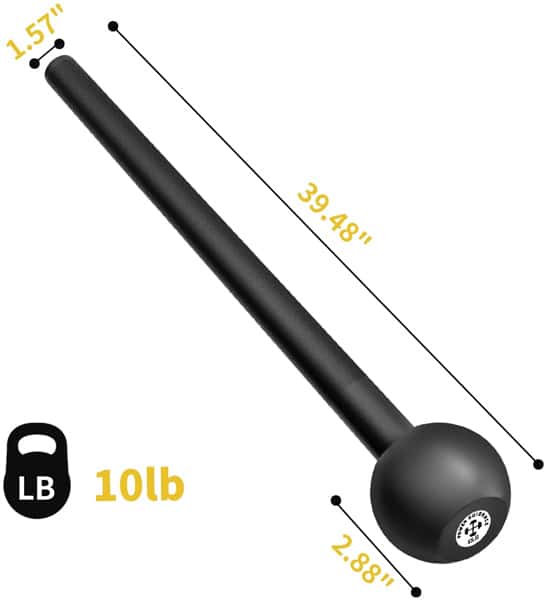
The two next weight types draw inspiration from old-school Indian wrestling gyms called akharas. A few gym equipment manufacturers and fitness brands have come out with steel maces, also known as gadas.
The mention of a mace was first found in Hindu scriptures where warriors used gadas to train and fight in battles. However, maces are resurging and becoming a part of modern-day functional training programs.
The steel mace has a disproportionate weight displacement, which optimizes your stabilizer muscles, joints, and primary power centers. It can help build core and rotational strength. The mace should be a part of your training arsenal if you are into functional training.
9. Steel Clubs
Clubs were popularized by Indian akhara wrestlers who used them to build grip strength, improve shoulder mobility and strength, and rotational core power.
You could use the clubs for static or dynamic exercises to add variety to your training. Per experts, working out with clubs can help build real-world strength that can improve your functionality. It will improve your grip, arms, core strength, and balance.
Add the versatile tool to your exercise regimen to improve your strength, conditioning, and muscle balance.
Light club and mace training is recommended for people recovering from injuries. However, you should consult your physician before lifting weights in the rehabilitation process.
10. Weighted Vest
You could have hit a plateau if you have been training and dieting hard but cannot seem to move the needle in the right direction. Weighted vests can be a breath of fresh air your workouts desperately need.
Weighted vests are especially useful for people who routinely engage in bodyweight exercises or calisthenics. Plus, they are an incredibly effective training tool for runners and hikers.
The weight in the vests varies, but it typically ranges from 12–150 pounds (5.4–68 kg). Furthermore, most vests feature pockets to add or remove weights as needed.
11. Chains
Chains are an underutilized training tool — unless you’re the Rock. Lifting chains add variable resistance to your exercises, which can help take your gains to the next level.
Using chains on exercises like the bench press, squat, and deadlift help match the resistance curve of an exercise with the strength curve of a muscle. In simple words, the resistance reduces as you lower the bar toward the floor and adds on as you lift it away from the ground.
Notably, this phenomenon doesn’t work if you place heavy chains around your neck while performing the dips, like the Rock.
12. Medicine Ball
Medicine ball training can help build muscle and core strength, explosive power, coordination, agility, balance, and speed. Plus, it can be used in the rehabilitation process. [4]
There are many different types of medicine balls available on the market. Some have handles, some don’t, some bounce, and some don’t. You can choose between a medicine, slam, and wall ball based on your preferences and goal.
Many people also prefer performing exercises like the Russian twist, wood chopper, and medicine ball V-ups to work their core, sides, and obliques.
13. Atlas Stone
The Atlas stone is a strongman-centric training tool and isn’t recommended for folks training for bodybuilding, powerlifting, and weightlifting as it increases the chances of injury. CrossFit athletes can have a go at it, but don’t let your ego get the better of you.
The Atlas stone can help improve hip extension and explosive starting strength. It can also develop crushing (isometric) strength as you need to grapple the stone as tightly as possible.
Lifting the Atlas stone stimulates your erectors, lats, rhomboids, shoulders, and pecs. Remember, this is an advanced exercise and should only be performed under expert supervision.
14. Sled
The sled can be the heaviest weight most people push in the gym and is a great way to add intensity and volume to your training program. It can help improve your overall conditioning, build strength, and boost speed and acceleration, all while torching calories.
You could perform the sled push at the end of a leg workout as a finisher or as part of a full-body circuit training routine. It doesn’t matter when you do it, you’ll be completely spent at the end.
15. Resistance Bands
Were you not expecting resistance bands on the different types of weights list? It is no wonder why only a few people make the most of this training tool in their workouts.
You could use it as standalone training equipment for training different muscle groups and add it to your warmup regimen for stretching. Plus, you could tie resistance bands around machines like the leg press, hack squat, and machine chest press to add variable resistance to your training.
Check Out: 13 Best Resistance Bands Reviewed for 2024
16. Water Weight Bag
The water weight bag is one of the newest innovations in the health and fitness space. Water bags use water dynamics to build stability, strength, and explosiveness.
You can use a water weight bag like a sandbag, kettlebell, medicine ball, and much more. The water weight bag delivers a full-body workout and will fire up your core and boost your balance and stability.
Wrapping Up
We hope you’ve picked up a few new weights through this article, which can help take your training to the next level.
Using the 16 different types of weights in your workouts can help add variety to your training, which is great if you are stuck on a plateau and want to break through the overhead ceiling. Plus, they will equip you with exercise alternatives if you train during rush hours and the machines at your gym are occupied.
References
- https://www.atlantis-press.com/proceedings/iset-18/55910625
- Benedetti MG, Furlini G, Zati A, Letizia Mauro G. The Effectiveness of Physical Exercise on Bone Density in Osteoporotic Patients. Biomed Res Int. 2018 Dec 23;2018:4840531. doi: 10.1155/2018/4840531. PMID: 30671455; PMCID: PMC6323511.
- Suchomel TJ, Nimphius S, Bellon CR, Stone MH. The Importance of Muscular Strength: Training Considerations. Sports Med. 2018 Apr;48(4):765-785. doi: 10.1007/s40279-018-0862-z. PMID: 29372481.
- Handelsman DJ, Hirschberg AL, Bermon S. Circulating Testosterone as the Hormonal Basis of Sex Differences in Athletic Performance. Endocr Rev. 2018 Oct 1;39(5):803-829. doi: 10.1210/er.2018-00020. PMID: 30010735; PMCID: PMC6391653.
- Westcott, Wayne L. PhD. Resistance Training is Medicine: Effects of Strength Training on Health. Current Sports Medicine Reports: July/August 2012 – Volume 11 – Issue 4 – p 209-216 doi: 10.1249/JSR.0b013e31825dabb8
- Gordon BR, McDowell CP, Lyons M, Herring MP. The Effects of Resistance Exercise Training on Anxiety: A Meta-Analysis and Meta-Regression Analysis of Randomized Controlled Trials. Sports Med. 2017 Dec;47(12):2521-2532. doi: 10.1007/s40279-017-0769-0. PMID: 28819746.
- Swift DL, McGee JE, Earnest CP, Carlisle E, Nygard M, Johannsen NM. The Effects of Exercise and Physical Activity on Weight Loss and Maintenance. Prog Cardiovasc Dis. 2018 Jul-Aug;61(2):206-213. doi: 10.1016/j.pcad.2018.07.014. Epub 2018 Jul 9. PMID: 30003901.
- Thomas E, Battaglia G, Patti A, Brusa J, Leonardi V, Palma A, Bellafiore M. Physical activity programs for balance and fall prevention in elderly: A systematic review. Medicine (Baltimore). 2019 Jul;98(27):e16218. doi: 10.1097/MD.0000000000016218. PMID: 31277132; PMCID: PMC6635278.
- Sherrington C, Fairhall NJ, Wallbank GK, Tiedemann A, Michaleff ZA, Howard K, Clemson L, Hopewell S, Lamb SE. Exercise for preventing falls in older people living in the community. Cochrane Database Syst Rev. 2019 Jan 31;1(1):CD012424. doi: 10.1002/14651858.CD012424.pub2. PMID: 30703272; PMCID: PMC6360922.

